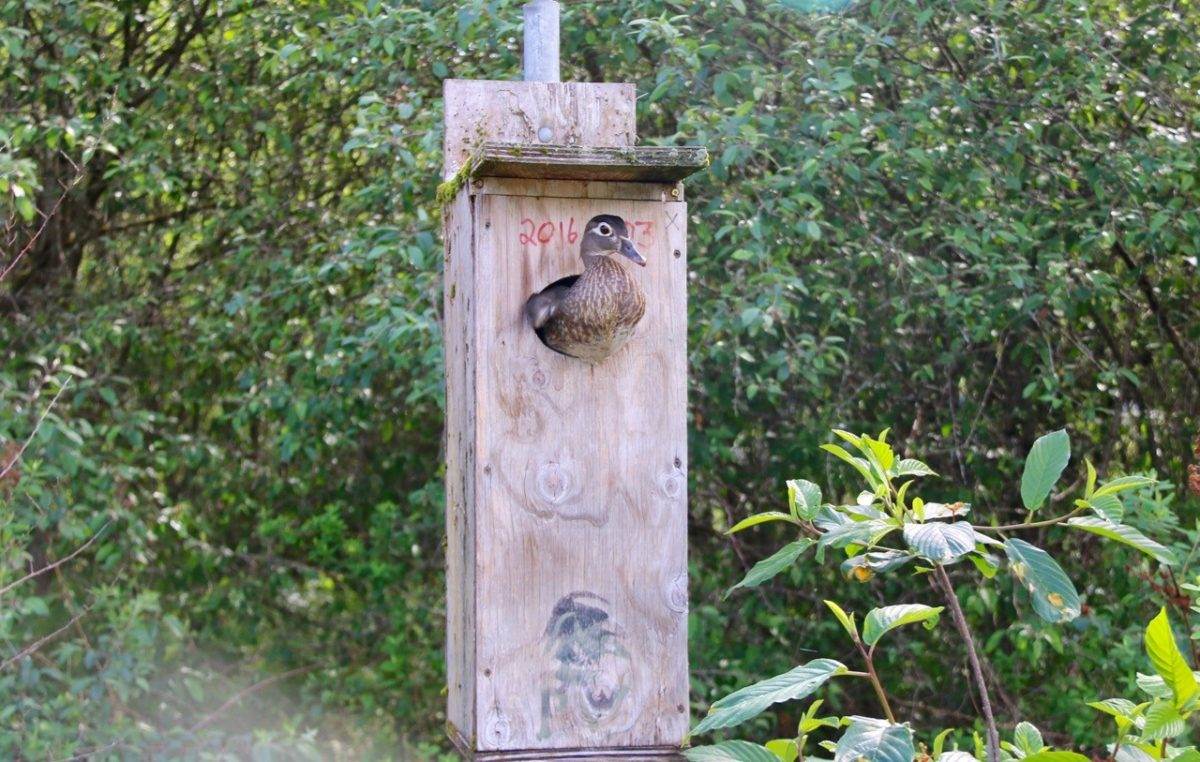
By Rebecca Merenyi | Just a short drive from Vancouver, Pitt-Addington Marsh is home to an incredible range of wildlife including herons, beavers, muskrats, and osprey. During their first week of fieldwork, the Lower Mainland Conservation Youth Crew had the pleasure of working on a special project: monitoring Wood Duck nesting boxes.
Wood Ducks are a migratory bird species that are considered the most beautiful of all waterfowl. And like many waterfowl in BC, they are mainly vegetarians and live in the smallest of places.
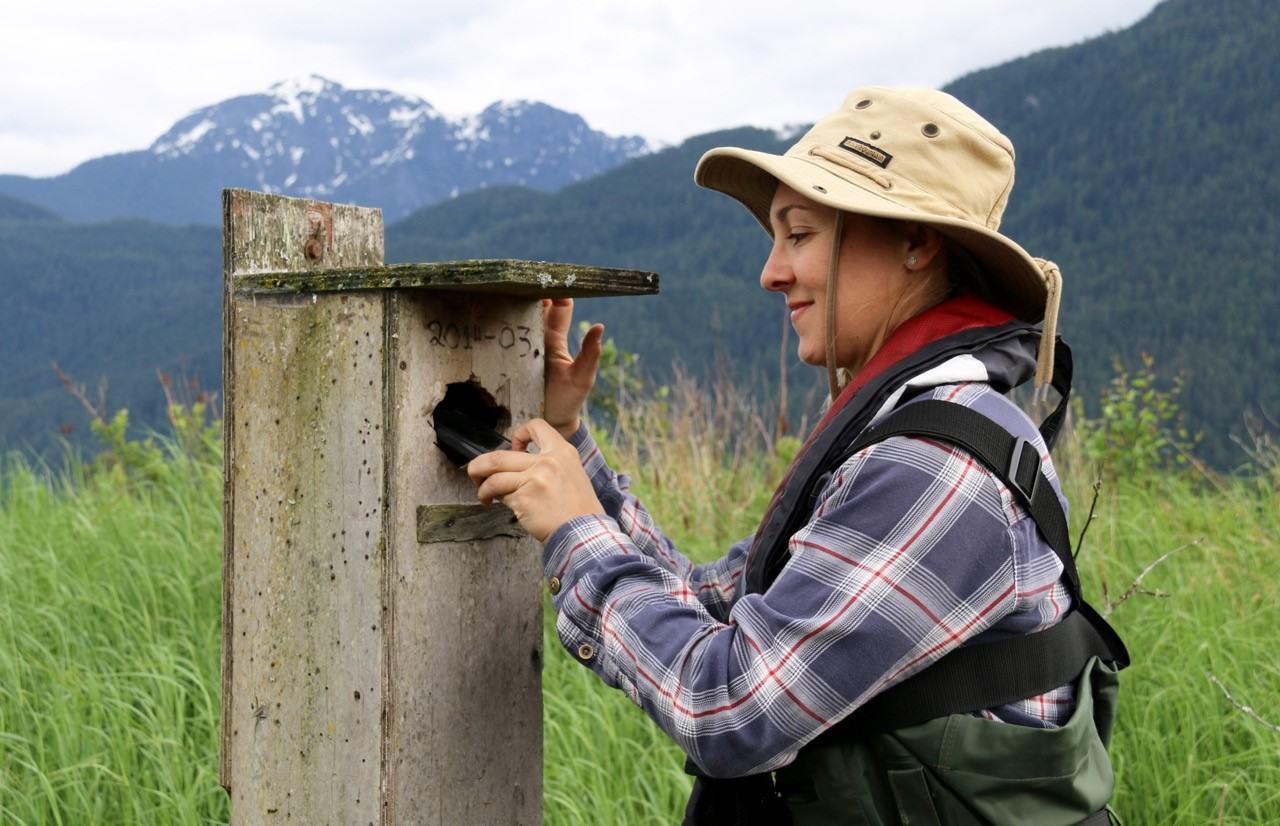
They return to the Lower Mainland in the early spring to breed and raise their young. As cavity nesters, they like to build their homes in tree hollows, which can be very challenging to find in an open marsh.
Thanks to two local waterfowl conservationists, Chris Bradford and Dan Otway, the ducks now have secure nesting boxes perched high above the marsh. The construction and monitoring of the boxes started as a passion project, and has grown to over 60 nesting boxes spread throughout the area. With help from other volunteers, Chris and Dan build and install the boxes in hopes of increasing the Wood Duck population.
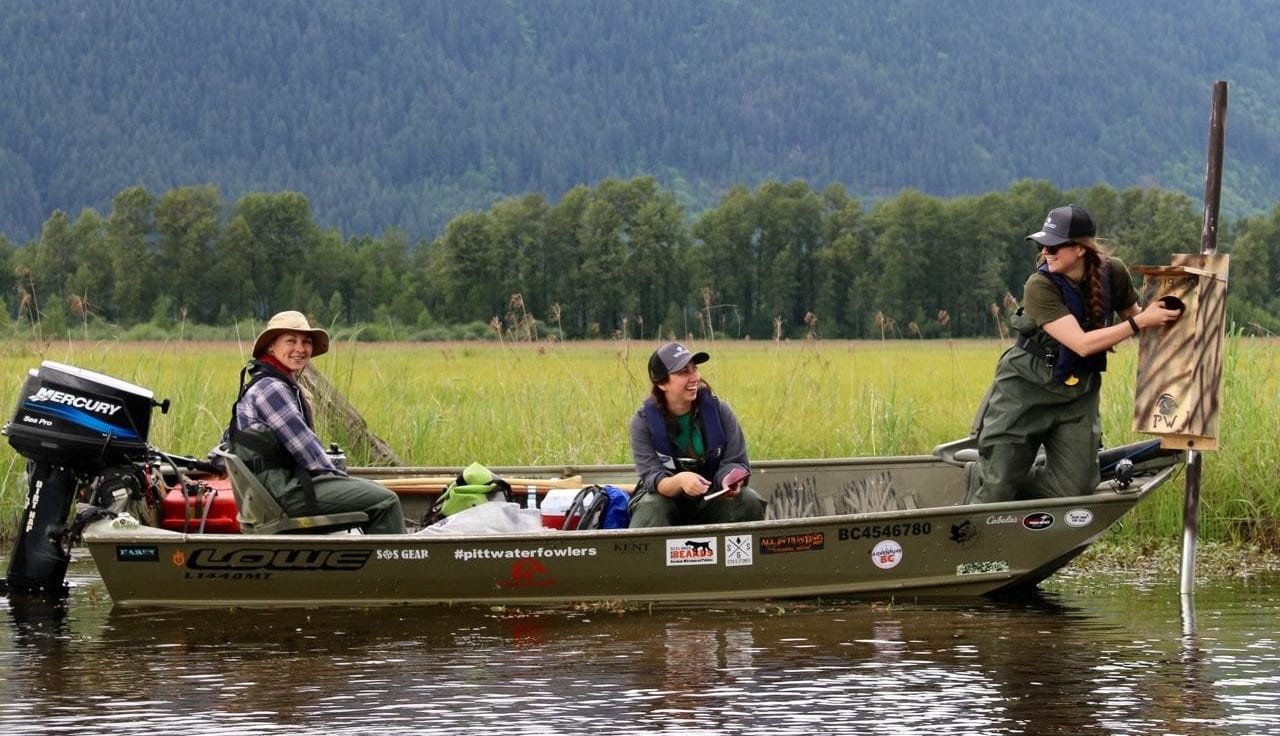
The Conservation Youth Crew inspected the nesting boxes to record which species of birds were using them. The majority was used by swallows, but two Common Mergansers and nine Wood Ducks had established nests. Common Mergansers are also cavity nesters, but unlike Wood Ducks, they feed primarily on small fish.
Female Wood Ducks lay up to 15 eggs at a time and incubate them for 28 to 30 days. As soon as the chicks hatch, they leap from the nests into the water, where their mom will stay with them until they develop flight feathers.
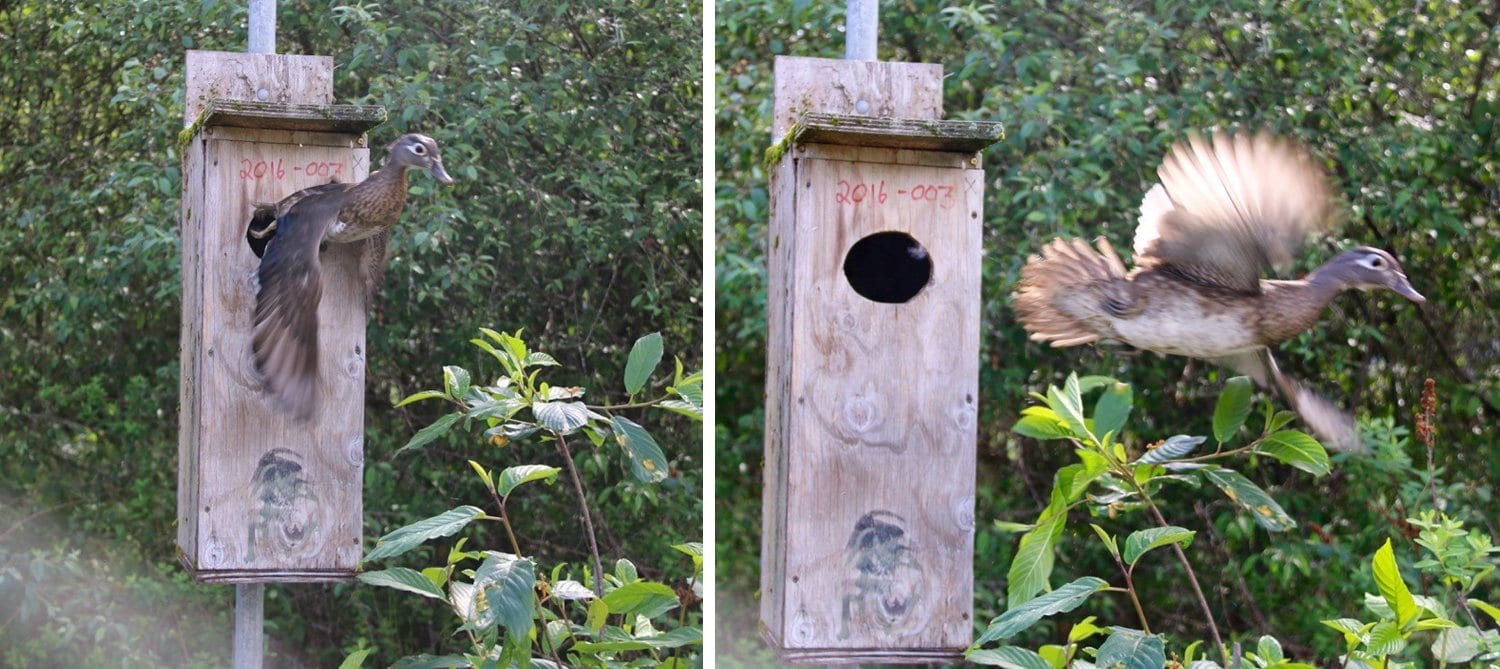
Chris and Dan want to build and install swallow nesting boxes to reduce the competition for the current nesting boxes, while continuing to raise awareness of the importance of the marsh as wildlife habitat.
Learn more about the Lower Mainland Conservation Youth Crew work this summer on Instagram @naturetrustcrew.
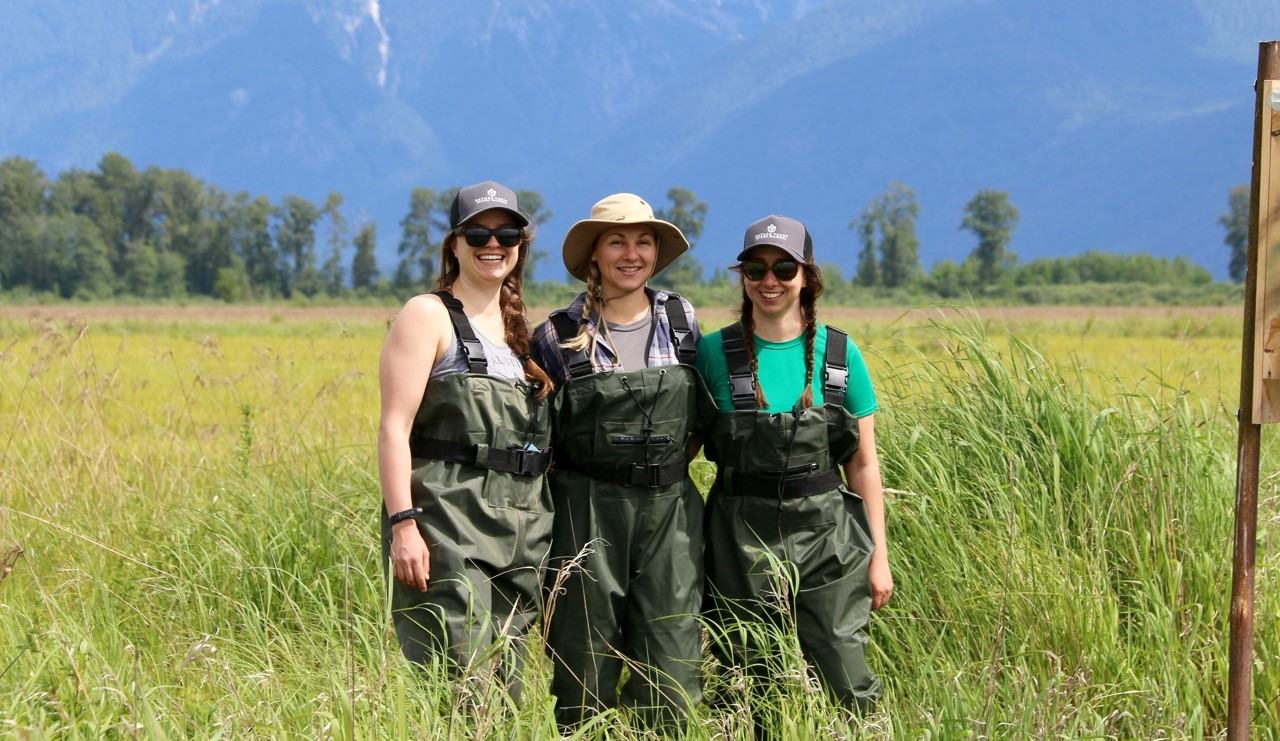
Addington Point Marsh is a Nature Trust of BC property covering 258 hectares in the Pitt-Addington Marsh Wildlife Management Area.
